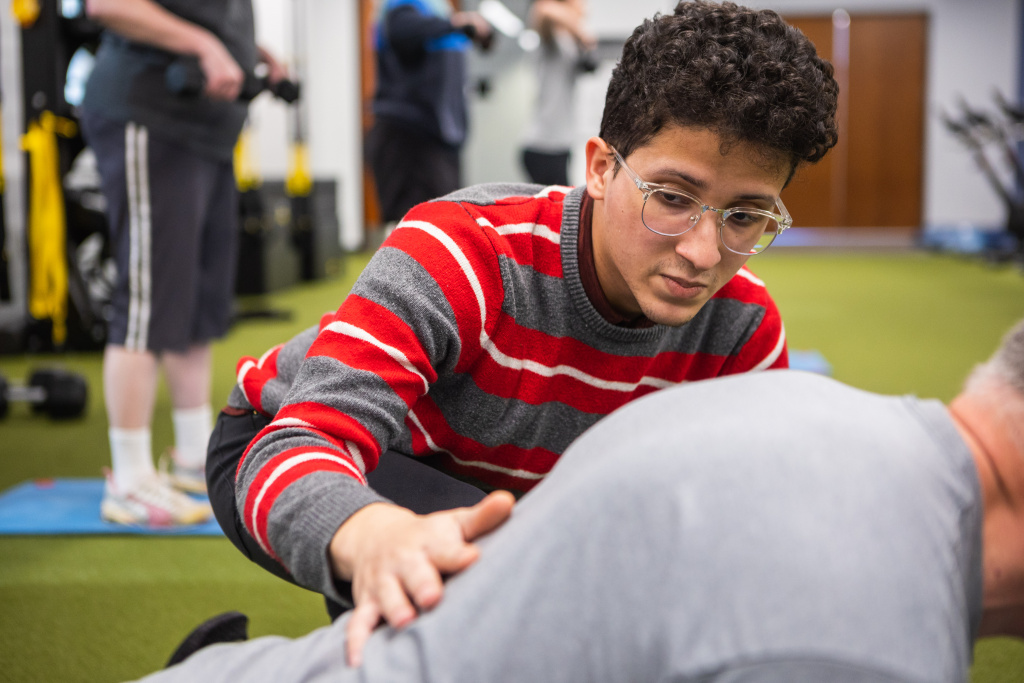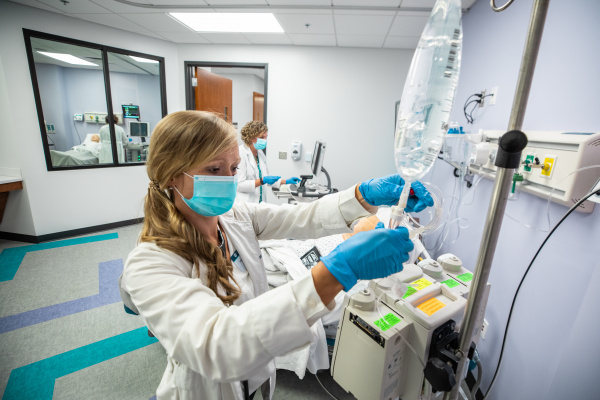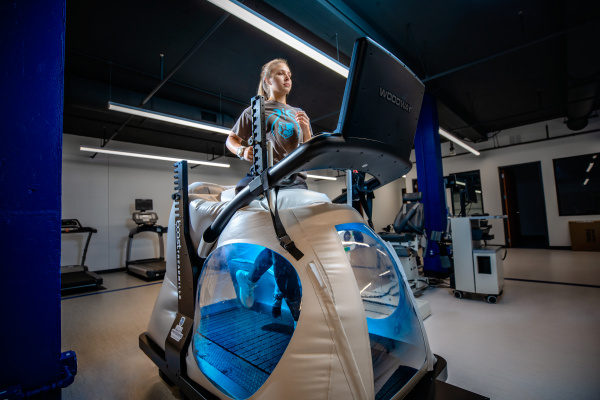Three program objectives — flexibility, lower BMI and no incidence of cardiac arrest — were presented to the student trainer before the initial physical assessment. The latter, of course, was in jest(?) to break the ice.
Fortunately, Josue Rojas, a junior kinesiology major from Puerto Rico, proceeded without alarm. He would be tailoring, directing and assessing holistic in-person and home exercise regimens under supervision during his semester-long professional fitness training practicum.
BJU faculty/staff volunteers across various age groups are the primary class participants.
“I’ve always liked to use faculty/staff volunteers because when they train their friends they tend to be more relaxed,” said Vickie Britton, associate professor in the Division of Exercise and Sport Science. “I tell them that the faculty/staff is probably an expert in their area, but this is where you are going to be the expert.
“Sometimes we have retirees that volunteer and one student was working with a lady who was in her 80s. Afterward, she said I never considered working with senior citizens. But after going through this, I feel like that’s where the Lord is leading me.”
Fast-Growing Industry
Careers under the umbrella of kinesiology — the academic discipline that studies physical activity and its impact on health, society and quality of life — are projected to increase 18% through the end of the decade, according to the U.S. Bureau of Labor Statistics. Much like careers in a variety of allied health/medical fields, the health care needs of an increasing senior citizen population are a driving force.
BJU’s accredited kinesiology program — with concentrations in exercise physiology and sports medicine and rehabilitation — prepares students to excel in a range of careers. Rojas is setting his sights on helping cardiac and stroke patients in Puerto Rico recover and rehabilitate, which includes a personalized program of exercise, education and counseling in coordination with other health care specialists.
Rojas, a conscientious man with a professional demeanor, has an affinity and compassion for helping individuals improve their short- and long-term health.
“Since I was a kid I’ve struggled with two physical conditions and my doctor told me to get into an exercise routine and sports, so I know the impact that exercise has in disabled people. I want to be a positive influence through my knowledge in exercise science,” he said. “I’ve seen many people in Puerto Rico that have gone through many heart conditions and I’ve seen how those conditions affected them. I know the impact exercise has in their lives and on their health, and this practicum confirmed the idea of pursuing that work.”
Smart Goals in Mind
The kinesiology program combines coursework in basic sciences and exercise sciences. Exercise Testing and Prescription is a practicum prerequisite, during which students learn to assess a client’s risk factors, aerobic fitness level, muscular strength and endurance, flexibility and body composition.
“That’s where they learn to do all the pre-activity assessments, how to help their client write a smart goal, how to do the fitness assessments, how to write specific exercise prescriptions that are designed to meet that client’s needs,” Britton said.
See Also: Research for Growing Programs
The class helps prepare students to not only be proficient in prescribing personalized exercise programs for healthy individuals as well as individuals with chronic diseases, injuries and disabilities but be more relaxed and conversational in an environment they’re not accustomed to.
“It’s just such good, practical experience. Not all of our graduates go into personal training, but we feel like this experience helps them no matter which direction they go,” Britton said. “It helps make them a better physical therapist, occupational therapist if they’re going into business health, athletic training, strength and conditioning. They take everything they’ve learned and put it into practice.”
State-of-the-Art Facility
Clients during in-person sessions use a variety of exercise equipment in the Wellness Lab along with assessment tools in the Human Performance Lab — both state-of-the-art facilities in the Mack Building — along with the outdoor and indoor tracks. The hands-on practicum experience usually precedes an internship in the student’s senior year, which further equips students to enter the workforce or pursue further training.
“At the end of the practicum, the student trainers write a strategic analysis paper — sort of a reflection,” Britton said. “All of them say it was such a good experience that will help them in an internship. We have a huge list of internship opportunities in cardiac rehab, physical therapy, occupational therapy, chiropractic medicine, therapeutic recreation, teaching PE. People are calling me. Our students have been the best advertisements.”








